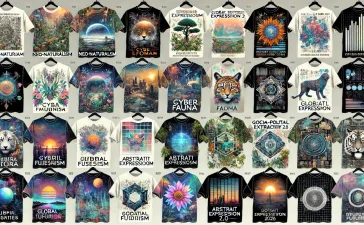“When you doubt your power, you give power to your doubt.”
~Honore de Balzac
This insightful quote by Honore de Balzac resonates profoundly within the creative community, encompassing artists, designers, and other creatives. It encapsulates a critical psychological battle that many in these fields face: the struggle between self-confidence and self-doubt.
Creatives, by their very nature, are deeply invested in their work. Their creations are not just products but extensions of their identity, embodying their skills, vision, and emotions. Because of this, they are often more vulnerable to self-doubt and criticism. When doubt takes root, it can significantly impact their ability to create, innovate, and succeed.
For an artist, doubting one’s power can mean questioning their ability to produce meaningful or valuable work. This doubt can lead to creative blocks, where the fear of failure or criticism stifles artistic expression. Consider an artist preparing for a major exhibition. If they start to doubt their talent, they might second-guess their choices, potentially leading to procrastination or even the abandonment of promising projects. This self-doubt not only hampers productivity but also diminishes the emotional and psychological fulfillment that comes from artistic creation.
In contrast, when artists embrace their power and trust in their abilities, they unlock their full creative potential. Confidence allows them to take risks, experiment with new techniques, and push the boundaries of their art. The legendary painter Vincent van Gogh is an excellent example. Despite facing intense self-doubt and external criticism throughout his life, his moments of self-belief led to the creation of masterpieces that have left a lasting impact on the art world. Van Gogh’s ability to intermittently overcome his doubts and embrace his artistic power is a testament to the profound effect of self-confidence on creative output.
For designers, particularly those in highly competitive fields like fashion, graphic, or interior design, doubting one’s power can be equally detrimental. In an industry driven by innovation and aesthetic appeal, self-doubt can lead to a conservative approach, where designers might avoid bold or unconventional ideas for fear of rejection. This cautiousness can stifle creativity and lead to work that is safe but uninspiring. For example, a fashion designer who doubts their vision might stick to tried-and-true designs rather than experimenting with new fabrics, cuts, or styles that could set them apart in the industry.
Conversely, when designers believe in their capabilities, they are more likely to produce groundbreaking work that captures attention and sets trends. Coco Chanel, a revolutionary figure in fashion design, exemplified this. Despite numerous challenges and societal expectations, Chanel’s unwavering belief in her vision led to iconic designs that redefined women’s fashion. Her confidence in her power allowed her to challenge the status quo and create a lasting legacy.
In the broader context of the creative industry, including writers, musicians, and filmmakers, the dynamic between self-doubt and self-confidence is equally impactful. Creatives often face a unique pressure to constantly innovate while also meeting commercial expectations. Doubting their power can lead to a paralyzing fear of not living up to past successes or failing to meet audience expectations. This fear can result in a reliance on formulaic or derivative work, undermining the unique voice that makes their creations special.
Take the example of J.K. Rowling, who faced numerous rejections before the success of the Harry Potter series. Had she allowed self-doubt to dominate, she might have abandoned her manuscript altogether. Instead, her belief in her story’s value kept her persevering, ultimately leading to one of the most successful literary franchises in history. Her journey underscores the importance of trusting one’s creative power and the profound impact it can have on achieving greatness.
Balzac’s quote is a powerful reminder for creatives that self-doubt is not just an internal struggle but a formidable barrier to success and fulfillment. Overcoming this doubt requires a conscious effort to recognize and affirm one’s abilities. Techniques such as setting small, achievable goals, seeking constructive feedback, and surrounding oneself with supportive peers can help build confidence. Additionally, reflecting on past successes and the unique qualities that make one’s work valuable can reinforce a sense of capability and worth.
In conclusion, the relevance of Honore de Balzac’s quote to artists, designers, and creatives is profound. It highlights the critical importance of self-belief in unleashing creative potential and achieving success. By recognizing and combating self-doubt, creatives can empower themselves to take risks, innovate, and create work that is both meaningful and impactful. Trusting in their power allows them to push boundaries, overcome challenges, and ultimately, realize their full potential in their artistic and creative endeavors.
Want to learn more?
- Find out more
- Launch Pad + Accelerator Expressions of Interest
- Selling and Licensing Your Art & Designs Around the World with ArtSHINE.
We’re here to help you to take action, just like we’ve helped thousands of other entrepreneurs, business owners, and creative professionals all around the globe.
Now is the time to let your passion SHINE.
Now is the time to Make Tomorrow Today!
To your success, Vinh Van Lam and Stuart Horrex Cofounders ArtSHINE.com





